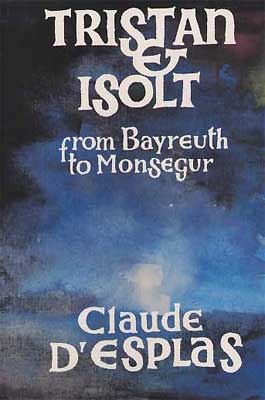|
|
 The beginnings of the Tristan legend are shrouded in the darkness of times past. The impression the story of Tristan and Isolt makes today is marked by that primeval and bitter taste which distinguishes it from the suavity characteristic of the courtly idealism dominant at the end of the twelfth century. Was it this particular feeling which led Pauphilet to write in his fine study Le Legs du Moyen Age (The Legacy of the Middle Ages): 'There is nothing in medieval literature which is at the same time more precious and more embarrassing; it is all charm and beauty, timeless human nature; but it is also problematic, enigmatic. The most accessible of our old romances is, at the same time, for those who want to go into depth the most difficult one to grasp...'? Perhaps there was a first version of the Tristan legend prior to 1150; but the popularity of the theme dates from the period between about 1160 and 1190 when several written texts on this subject were produced, texts which can be classified somewhat arbitrarily into French and non-French versions. The first of these traditions is illustrated by two authors: Beroul and Thomas. There are 4485 lines to Beroul's version which tells the story of the lovers' adventures after the absorption of the love potion, and before Tristan's death. Thomas's version is preserved in five fragments; the most important of which tells the end of the story, that is the death of Tristan and Isolt. The two narratives differ so much that Joseph Bédier chose to take the material for his reconstruction of the work from foreign translations and imitations of Thomas's version:'another Viollet-le-Duc' in the view of promoters of restoration. It seems that the prose version of the legend, dating from about 1215 to 1230, found its inspiration directly in an original manuscript or archetype, the Ur Tristan, a nebula - according to Gaston Paris - of anecdotal poems ('lais') with more or less clearly defined contours, or else one fully-fledged romance, a lost archetype - this is the view of Joseph Bédier - which was the direct source of Beroul, Thomas and their successors. Among the non-French versions a place of honour is due to Eilhart von Oberg's Tristrant which seems to draw on sources used by Beroul, and to the foreign transcriptions of the work of Thomas, which were very successful in contemporary Europe: the Norwegian saga of Tristram ok Isönd and the Tristan of Meister Gottfried von Strassburg, and of the two who continue his tradition: Ulrich von Türheim, and Heinrich von Freiberg. The text of Thomas also inspired the English prose version Sir Tristrem, and the Tavola Ritonda, the Italian prose version of the stories of the Round Table, which includes the story of Tristan. |
ADG-Paris © 2005-2024 - Sitemap




